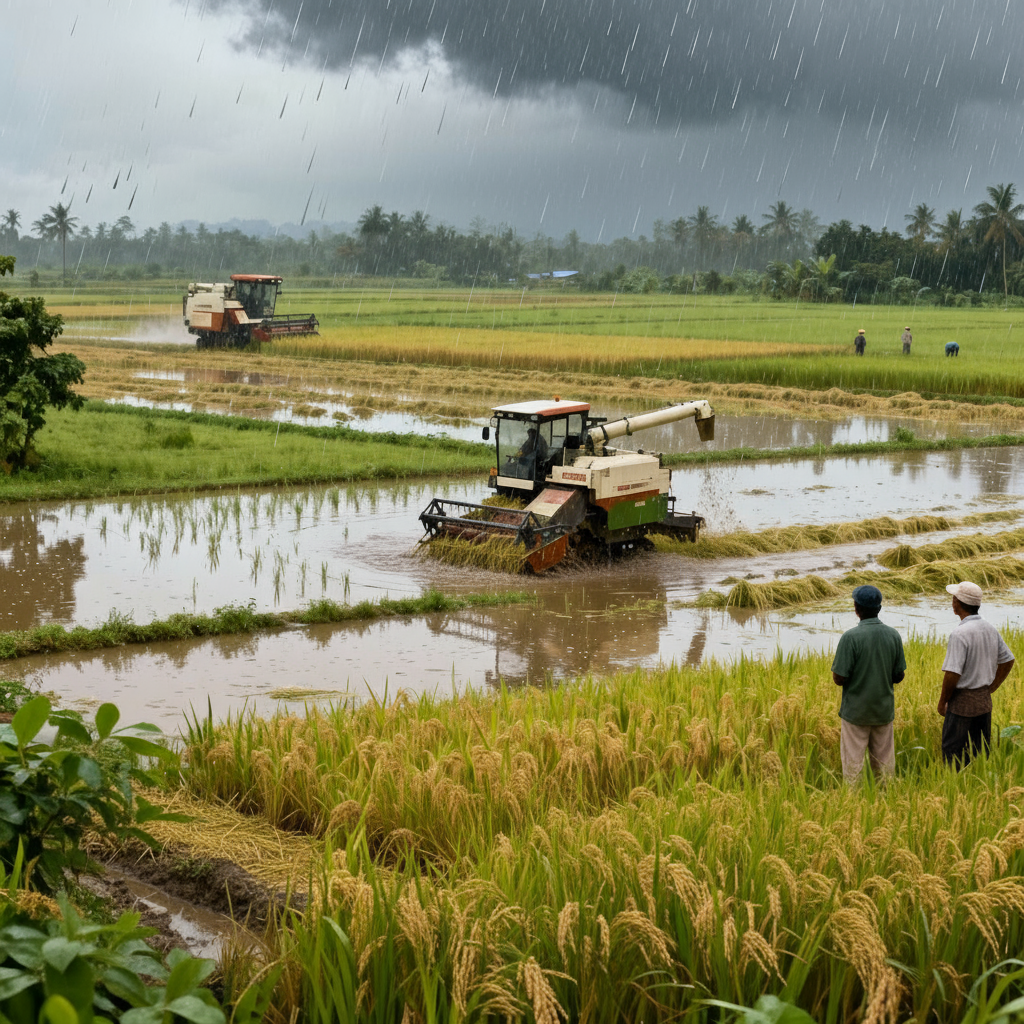Agriculture dept deploys extra harvesters amid delays

PANAJI
The sudden spell of unseasonal rains in recent days has disrupted paddy harvesting operations across Goa, forcing farmers in some cases to delay mechanical harvesting and raising concerns about potential crop damage.
While officials remain optimistic that losses will be minimal, the wet conditions have slowed down work in several parts of the State.
“There will be no crop loss, but it does affect the harvesting operations, slowing down the work. We may have to deploy more harvesting machines,” said Sandeep Fol Desai, Director of Agriculture.
He noted that the rains have mostly occurred in the late evening, allowing some harvesting to continue during the day. However, wet paddy stalks and waterlogged fields have posed significant challenges. “In some cases where logging happens due to excessive flow of water from higher ground, the operations are postponed,” Fol Desai added. The department is working to deploy additional mechanical harvesters to mitigate delays, he added.
Low-lying fields are particularly vulnerable, as stormwater runoff from surrounding elevated areas tends to accumulate in these regions. This can lead to paddy lodging — a condition where mature paddy stalks fall to the ground, increasing the risk of germination and crop damage if submerged for extended periods.
Fol Desai confirmed that only a few sporadic cases of lodging have been reported so far. “In such cases, there is a risk of damage to the crop due to germination if the stalk and the paddy ear remain under water,” he said.
Despite the challenges, nearly 50% of the cultivated paddy fields have already been harvested. The Agriculture Department remains hopeful that the remaining harvest can be completed by the end of October without significant damage.
Goa has around 23,800 hectares under paddy cultivation this Kharif season, a slight increase from last year. The State’s farmers rely heavily on mechanised harvesting, especially in regions like Salcete, Ponda, and Bardez, where labour shortages and terrain make manual harvesting difficult.
Officials are closely monitoring weather patterns and advising farmers to delay harvesting in vulnerable areas until conditions improve. With dry days forecast ahead, stakeholders are cautiously optimistic that the season can still end on a productive note.